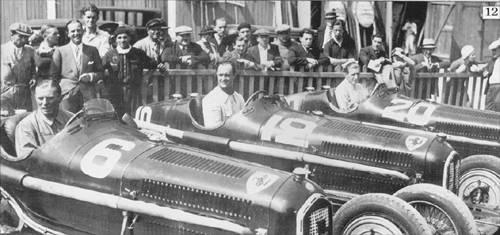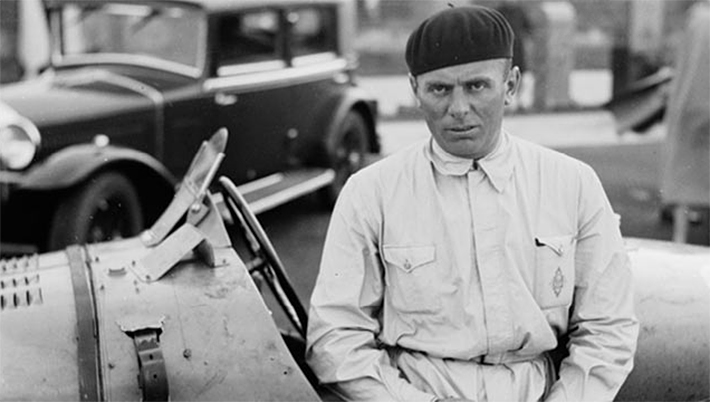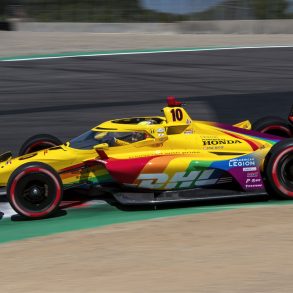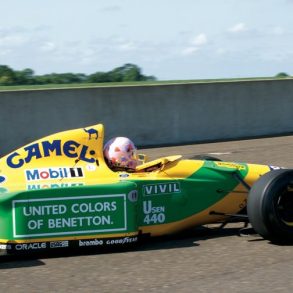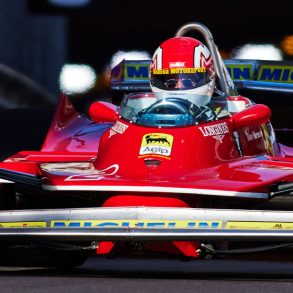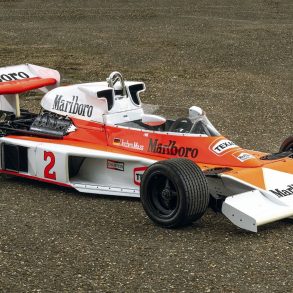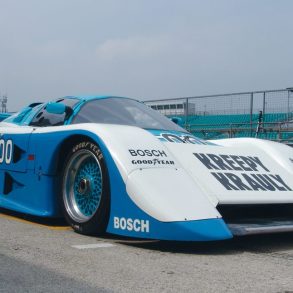Achille Varzi Biography
The mist rose from the wet track as the famous 44 year old racing driver, immaculate both in his dress and his driving, sped along the Bremgarten track in his 158 Alfa Romeo during practice for the forthcoming 1948 Swiss and European Grand Prix. It was July 1st and the summer sun was rapidly drying the sodden track. The Alfa was virtually invincible at the time, in fact it was in the middle of a five year unbeaten run. Achille Varzi was close to emulating his form of the late twenties and early thirties, when he was Tazio Nuvolari’s greatest rival. He was regarded as a courageous but very safe driver, who had never had a serious accident. Suddenly however, near the Jordenrampe curve, the car skidded in the wet at 110mph, spun several times and then, after almost coming to a stop, flipped over and crushed its driver. It was a terrible tragedy that Varzi’s first real mistake should cost him his life.
Born in 1904, Achille Varzi was the son of a wealthy cotton manufacturer and came from Galliate, near Milan. He first came to public notice as a motor cyclist (as did his brother Angelo) riding the most expensive and best machines, Garellis then Sunbeams. He and Nuvolari were motor-cycle racing stars at the same time, but seldom came up against each other on the track. In 1928 Nuvolari and Varzi entered into a motor racing partnership with a stable of Type 35 Bugattis.
This led to Varzi switching to Maserati, and in 1930 he earned the title of ‘Champion of Italy’ mainly driving for this up-and-coming marque. The 1930 Targa Florio was a significant race in Varzi’s career. The previous five Targas had been won by French Bugatti cars – this was intolerable to the racing-mad Italians, and so a great deal of expectation and hope lay on the shoulders of Varzi in his 2-litre Grand Prix Alfa Romeo.
Achille started 12 minutes behind Louis Chiron, but in the first 20 miles gained a minute on the French champion. 
Chiron was handicapped by a very sick mechanic and two damaged wheels, the latter of which he managed to replace, but not the former! The damaged wheels, the jack and tools were abandoned on the roadside and, tumbling aboard, Chiron raced away in a wild frenzy. Meanwhile, as Varzi left the pits after changing tyres at the beginning of the last lap, he knew that he had no spare wheel (the attachment had broken), his fuel tank was leaking, and he might run out before he got round. Popping through the carburetor indicated that the supply was getting low. Grabbing a can of petrol from one of the many stations the firm had established round the circuit, the mechanic endeavored to pour its contents into the tank while running. Much of the fuel spilled over the tail, some of it dropped on the hot exhaust pipe and wicked flames began to play around the car. They reached Varzi’s neck, but he refused to stop. Crouching forward, and edging himself sideways in the seat, he gave his mechanic all possible room to fight the flames with the seat cushion.

In 1931 he switched again to a Type 51 Bugatti and had three victories, most notably the French Grand Prix (sharing with Louis Chiron). 1932 was a relatively poor year, but it was back to form for 1933, when he won the Monaco Grand Prix after a truly epic duel with Nuvolari.

As the 98th lap ended, the cars were neck and neck, with Achille just edging ahead as they started their 99th lap. On the climb to the Casino for the last time, Varzi held on to third gear, stretching his engine to the limit and risking all to take the lead. Nuvolari held him but briefly, for a piston failed as he over-revved and hot oil sprayed onto the hot exhaust. So as Varzi, alone for the first time in the race, took the flag, a yellow shirted figure jumped from his smoking car as it lost momentum down from the tunnel and started to push. Worried about a fire breaking out, a mechanic helped and Nuvolari was disqualified. The duel for the lead in the 1933 Monaco Grand Prix had lasted for 97 of 100 laps and thus is unique in Grand Epreuve history. Nuvolari led for 66 laps, Varzi led for 34 laps.
It was back to Alfa Romeo for 1934, and Varzi won 9 races with his P3 as well as the Mille Miglia in a Monza Alfa. Varzi was declared Italian Champion for the second time. Nuvolari rejoined Scuderia Ferrari (who raced the Alfas) in 1935 so Varzi went to Auto Union. His extremely quick reaction time and delicate touch enabled Varzi to get the best from the rear-engined Auto Union extraordinarily quickly and in his first season he won at Tunis and Pescara, despite the car being dogged with minor development troubles through most of the year. In 1936, he won at Tripoli, with a record lap of nearly 142mph, but during the season his health started to fail. He had a torrid affair with another driver’s wife, and became addicted to morphine.
He was out of racing for much of 1937 and nothing much more was heard of him until after the war when he made a surprise and welcome comeback to his old form with two successful seasons in the Alfa 158. He had two successful forays to South America and became very popular with the Argentineans. He planned to live in their country on retirement, and in the Argentine formed the Scuderia Achille Varzi which set Juan Manuel Fangio on the road to fame.
Varzi’s coffin stood for three days and nights on the chassis of a racing car in the church at Galliate, and his friends stood vigil over it. Some fifteen thousand people attended his funeral. Part of the farewell address at his grave went: “Perhaps you were destined to die, Achille, because in your driving there was something of that genius which is one of Nature’s greatest mysteries, and Nature strives to destroy those who come too close to her.
Beethoven was struck with deafness when he seemed about to transcend man’s powers of musical expression. Galileo was blinded when he tried to probe infinity and its laws. Leonardo da Vinci’s hands were crippled when he was about to come nearer to perfection than any man before him. And you too, Achille, were destroyed when you sought to cross the known frontiers of man-made speed. Now you are preparing for another race, the last great race. A race without danger, without care or sorrow…….”
Victories
1929 Monza, 1930 Targa Florio, 1930 Coppa Acerbo, 1930 Monza, 1930 Spain, 1931 Tunis, 1932 Tunis, 1933 Monaco, 1933 Avusrennen, 1933 Tripoli, 1934 Mille Miglia, 1934 Targa Florio, 1934 Tripoli, 1935 Coppa Acerbo, 1935 Tunis, 1936 Tripoli





